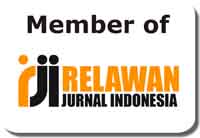Utilization of Euphemism in Conveying Negative Information: A Mixed-Methods Case Study
Abstract
While euphemism has been extensively studied, there remains a gap in the literature regarding its use by physicians with critically ill patients during consultations, as well as medical students' perceptions of this practice. This present mixed-methods case study addresses this gap by examining the forms of euphemistic language employed by doctors with critically ill patients and exploring medical student’s perspectives on this use. Findings reveal that physicians utilize euphemisms to emphasize positive aspects, employ softer terminology, and omit frightening details when communicating with critically ill patients. Medical students perceive this practice as valuable for minimizing patient stress and facilitating comprehension of information. of information. These findings have significant implications for medical practice and education. For practitioners, a nuanced understanding of euphemisms language can enhance patient-doctor communication, particularly in sensitive contexts, by mitigating anxiety and fostering a more supportive atmosphere. For medical educators, incorporating training on the effective use of euphemisms into curricula can better equip future physicians to navigate difficult conversations with empathy and clarity. This study also highlights the need for continued research into communication strategies within healthcare to ensure their alignment with both ethical principles and the emotional well-being of patients.
Keywords
Full Text:
PDFReferences
Allan, K., & Burridge, K. (2006). Forbidden words: Taboo and the censoring of language. Cambridge University Press.
Antonio, U. T. H. S. (2013). Delivering Bad News - An excellent encounter. Video Production. https://youtu.be/qHGvjv_7PLU
Aytan, A., Aynur, B., Hilal, P., Aytac, E., & Malahat, A. (2021). Euphemisms and dysphemisms as language means implementing rhetorical strategies in political discourse. Journal of Language and Linguistic Studies, 17(2), 741–754.
Back, A. L., Anderson, W. G., Bunch, L., Marr, L. A., & Wallace, J. A. (2015). Communication about cancer near the end of life. Cancer, 121(6), 825–834.
Barsukova, M. O., & Родионова, Т. В. (2022). The Means of Expressing the Category of Politeness in Medical Discourse (On the Material of the Doctor and Patient Speech Communication). Izvestiya of Saratov University Philology Journalism, 22(4), 377–384. https://doi.org/10.18500/1817-7115-2022-22-4-377-384
Brown, P., & Levinson, S. C. (1987). Politeness: Some universals in language usage (Vol. 4). Cambridge university press.
Brune, C. (2023). Medical Doctors’ Perceptions of the Media Coverage During the Covid-19 Pandemic: A Case Study in Stockholm. Health Services Insights, 16. https://doi.org/10.1177/11786329231222168
Bu, L. (2023). Concrete Analysis and Research Investigation of Doctor-Patient Relationship Under Evolutionary Game Model. Lecture Notes in Education Psychology and Public Media, 6(1), 1054–1059. https://doi.org/10.54254/2753-7048/6/20220997
Cao, W., Qi, X., Ting, Y., Han, X., & Feng, X. (2016). How Doctors Communicate the Initial Diagnosis of Cancer Matters: Cancer Disclosure and Its Relationship With Patients’ Hope and Trust. Psycho-Oncology, 26(5), 640–648. https://doi.org/10.1002/pon.4063
Chailes, A., & Alferraly, T. I. (2022). Knowledge Level of Doctors in USU Medical School Regarding Doctor-Patient Communication. Scripta Score Scientific Medical Journal, 4(1), 19–28. https://doi.org/10.32734/scripta.v4i1.8867
Channel 4 Entertainment. (2017). Giving Bad News To A Stroke Victim’s Wife | Confessions Of A Junior Doctor. In Channel 4 Entertainment. https://youtu.be/2DGcvMoiGbc.
Chen, X., & Chen, T. (2024). A Morpho-pragmatic Study of Translanguaging Euphemismson Chinese Social Media. Studies in Pragmatics, 25, 19–38.
Cohen, R., Lees, C., & Stefanovitch, G. (2021). Euphemism use in mental health communication: A scoping review. Journal of Mental Health, 1–9. https://doi.org/10.1080/09638237.2021.1881663
Creswell, J. W., & Creswell, J. D. (2017). Research design: Qualitative, quantitative, and mixed methods approaches. Sage publications.
Eng, V., Hewitt, V., & Kekalih, A. (2020). Preference for Initiation of End-of-Life Care Discussion: A Quantitative Study. https://doi.org/10.21203/rs.3.rs-109672/v1
Epton, T., Chittem, M., Tanikella, R., Rajappa, S., Sinha, S., & Harris, P. R. (2020). Indian patient use of cancer euphemisms: Association with psychological outcomes and health behaviours. Psycho‐Oncology, 29(7), 1193–1200.
Gernsbacher, M. A., Raimond, A. R., Balinghasay, M. T., & Boston, J. S. (2016). Special needs” is an ineffective euphemism. Cognitive Research: Principles and Implications, 1, 1–13.
Halimi, S. A., Azari, R., Bouillon, P., & Spechbach, H. (2021). A corpus-based analysis of medical communication: Euphemism as a communication strategy for context-specific responses. In Corpus Exploration of Lexis and Discourse in Translation (pp. 1–25).
Han, C., Wu, Q., Liu, C., & Wang, P. (2021). Patient’s Perceived Empathy Can Predict Doctor-Patient Relationship in Medical Interaction. https://doi.org/10.21203/rs.3.rs-232845/v1
Harding, S., Morphet, J., Ingham, J., & Edwards, H. (2020). Euphemism use in palliative care communication: A scoping review. Palliative Medicine, 34(10), 1326–1337. https://doi.org/10.1177/0269216320954976
Harris, A., Kalb, M., & Klebanoff, S. (2016). Ghosts in the consulting room. Taylor & Francis.
Heuer, A. J., & Bielinski, J. (2017). The use of euphemisms in medical encounters. Health Communication, 32(8), 1038–1047.
Kizi, D. N. O. M. (2021). Poetic use of euphemistic meaning and their sociolinguistics analysis. Academicia: An International Multidisciplinary Research Journal, 11(2), 1124–1131.
Lakoff, R. (1973). The logic of politeness: Or, minding your p’s and q’s. Proceedings from the Annual Meeting of the Chicago Linguistic Society, 9(1), 292–305.
Medics, G. (2022). Breaking Bad News Demonstration - OSCE Guid. In Breast Cancer Diagnosis. https://youtu.be/MKnWkrPLGOs
Puplampu, A. (2020). Unhealthy Communication: Health Care Communication Between Majority and Minority Cultural Groups. Macewan University Student Ejournal, 4(1). https://doi.org/10.31542/muse.v4i1.1893
Rawlings, D., Tieman, J. J., Sanderson, C., Parker, D., & Miller-Lewis, L. (2017). Never say die: death euphemisms, misunderstandings and their implications for practice. International journal of palliative nursing, 23(7), 324–330.
Slade, D. (2019). The Role of Euphemisms and Doublespeak in Health Care Professionals’ Interactions with Patients: A Call for Critical Language Awareness. Health Communication, 34(12), 1392–1399.
TheMSAG. (2020). Medical School Interview MMI-Breaking Bad News. https://youtu.be/WYLbx0CK0YQ.
Times, T. N. Y. (2009). Health: Delivering Bad News. In The New York Times. https://youtu.be/3khgo6BYleA
Yin, R. K. (2009). Case study research: Design and methods (Vol. 5). Sage.
Yip, J. W. (2020). Directness of advice giving in traditional Chinese medicine consultations. Journal of Pragmatics, 166, 28–38.
DOI: http://dx.doi.org/10.31332/lkw.v0i0.7383
Copyright (c) 2024 Nunun Tri Widarwati, Purwani Indri Astuti, Veronika Unun Pratiwi

This work is licensed under a Creative Commons Attribution-ShareAlike 4.0 International License.
Langkawi: Journal of The Association for Arabic and English indexed by:


















.png)
.png)

.png)
2.png)








